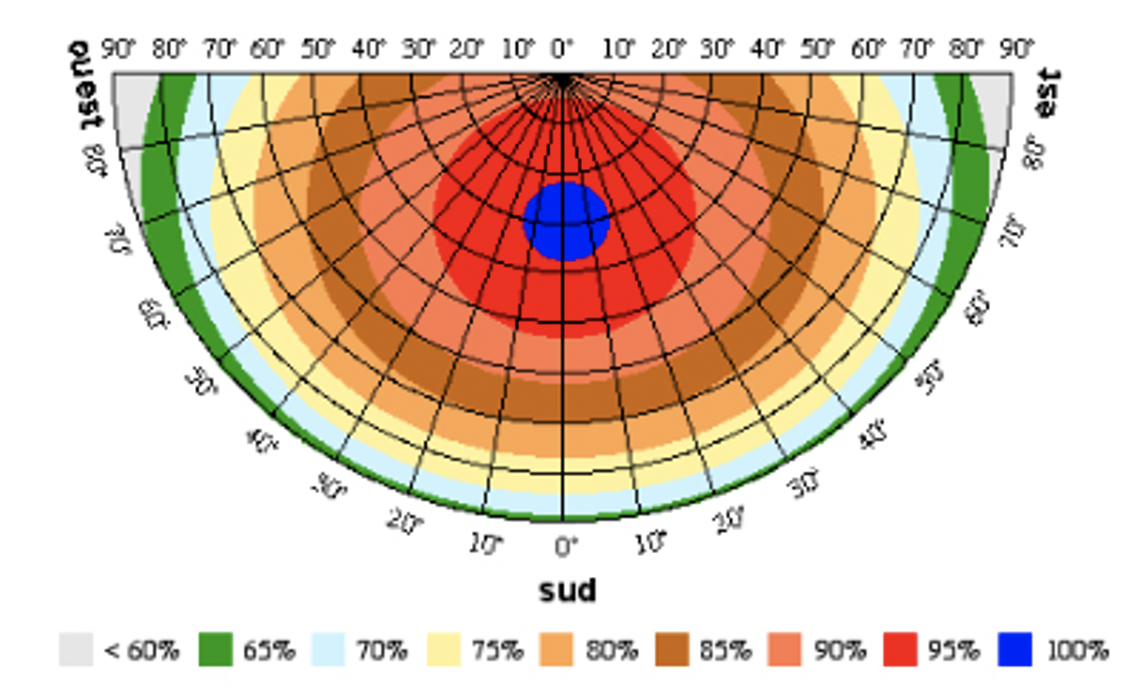Three parameters influence the profitability of your installation:
1. Price per Watt-Peak
In turn, these factors are influenced by :
- The size of your installation: as a general rule, larger installations generate economies of scale. There are many fixed costs associated with installation, such as worker travel, the inverter, rental of a gondola, etc. As a result, an installation with a larger number of solar panels will cost less per watt-peak installed, making it more profitable.
- Characteristics of solar panels
- Inverter characteristics
- The distance between the inverter and the panels: if the panels are located at some distance from your home (for example, a structure on the ground at the bottom of the garden), trenching may be necessary to run the cables. The greater the distance, the larger the cable diameter, which increases the cost per watt-peak installed.
2. Orientation, inclination of solar panels and geographical location
The orientation of solar panels has an impact on their electricity production. For example, a panel facing south generally generates more electricity than one facing east or west. Depending on the orientation and inclination of the panels, we can determine the "producibility", i.e. the number of kilowatt-hours (kWh) produced per kilowatt-peak (kWp) installed.
Productivity can vary, for example, from +/-1,050 kWh/kWp for an optimal situation with a 30° south-facing orientation, to 850 kWh/kWp for a situation with a 30° east-west orientation.
To give some examples from France, in cities such as Nice or Marseille, with optimum orientation to the south, we can achieve a producible output of around 1,050 kWh/kWp. On the other hand, in cities like Lille with an east-west orientation, the producible power can be around 850 kWh/kWp, i.e. a loss of around 20% compared to the optimal situation.

3. In which region are you located
Geographical location is a crucial factor, as is plant size. In fact, the region in which you install your solar project directly influences the grants or incentives available, and these can vary from one region to another.

